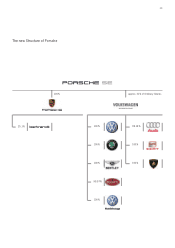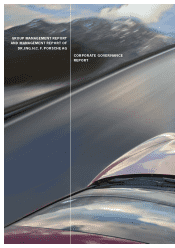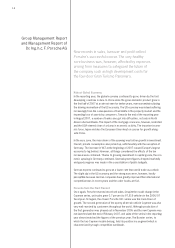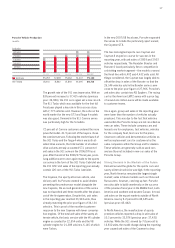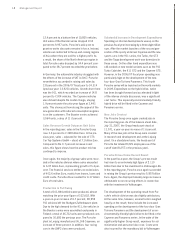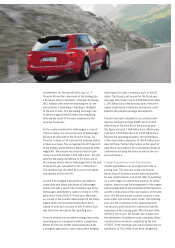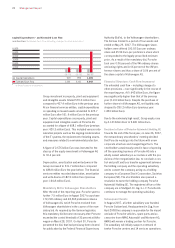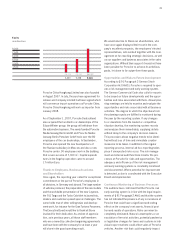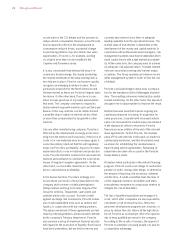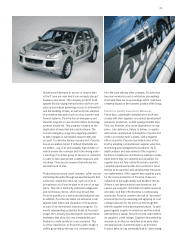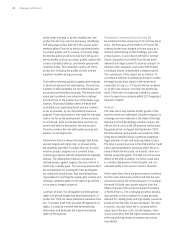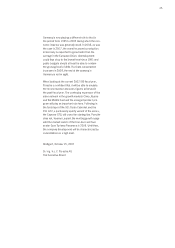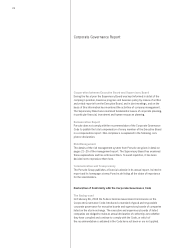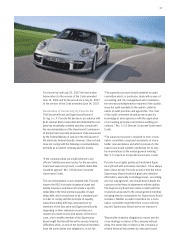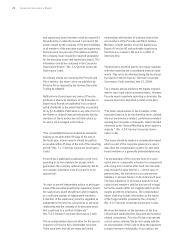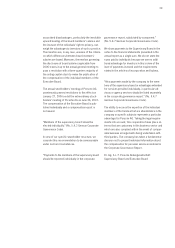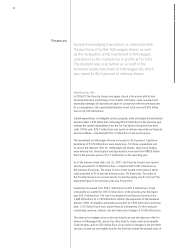Porsche 2006 Annual Report Download - page 25
Download and view the complete annual report
Please find page 25 of the 2006 Porsche annual report below. You can navigate through the pages in the report by either clicking on the pages listed below, or by using the keyword search tool below to find specific information within the annual report.
Unauthorized attempts to access or misuse data
in the IT area are risks which can seriously disrupt
business operations. The company protects itself
against this by issuing instructions to staff on com-
pulsory procedures governing access to information
and the handling of data, as well as by the adoption
of preventive measures such as virus scanners and
firewall systems. Porsche has an emergency and
disaster program in case its information technology
systems should fail. This program is based on the
duplication of important data and hardware. The
current emergency program is regularly updated
to take changes in operational requirements into
account. To minimize delays in production, Porsche
has an escalation model. If defined thresholds are
exceeded – e.g. if an unacceptably high number of
vehicles leave the conveyor belt in the wrong order –
a meeting of a certain group of persons is convened
in order to take appropriate countermeasures with-
out delay. This process ensures that vehicles are
manufactured to plan.
Production processes could, however, suffer serious
and lasting disruption through unexpected events that
cannot be completely ruled out, such as a fire or
an explosion at a Porsche plant or at one of its sup-
pliers. This risk is limited by extensive safeguards
and continuous checks, which also ensure that
Porsche qualifies as a well-protected industrial risk.
In addition, Porsche has taken out extensive cover
against plant failure and disruption of its business
as part of its international insurance program. For
events representing a potential threat to Porsche’s
image, the company has developed communication
strategies that allow it to react immediately and
flexibly to a wide variety of crisis scenarios. This
is of key importance, as Porsche’s public image is
chiefly governed by the way it is communicated.
As is the case with any other company, Porsche may
become involved in court or arbitration proceedings.
At present there are no proceedings which could have
a material impact on the economic position of the Group.
Extensive Quality Assurance Measures
These days, automobile manufacturers work very
closely with their suppliers on product development
and series production, so that synergy benefits arise.
This can, however, also cause dependence on sup-
pliers. Late deliveries, failure to deliver, or quality
deficiencies quickly Iead to disruption of production
at the car manufacturer’s plants, with a negative
effect on profits. Porsche has limited risks of this
kind by adopting comprehensive supplier selection,
monitoring and management procedures. An in-
depth analysis and assessment of the suppliers’
technical competence and financial viability is under-
taken before they are selected and classified. If a
supplier does not fully satisfy Porsche’s carefully
compiled requirement profile, but a contract is never-
theless to be awarded, skill development measures
are implemented. If the supplier then supplies parts
for the series production of Porsche, these are
subjected to thorough quality and deadline checks.
If there is any deterioration in performance, the
causes are analyzed, immediate remedial measures
are taken, and their effectiveness is continuously
monitored. Porsche counters the risk of “excessive”
series unit prices by examining and agreeing on cost
cutting measures for the series product together
with the supplier in the development phase. To safe-
guard against supplier insolvencies and the related
interruptions in supply, Porsche records and monitors
its suppliers’ credit ratings. Suppliers threatened by
insolvency can thus be identified at an early state
and appropriate countermeasures can be taken.
Product defects may eventually Iead to claims being
23


